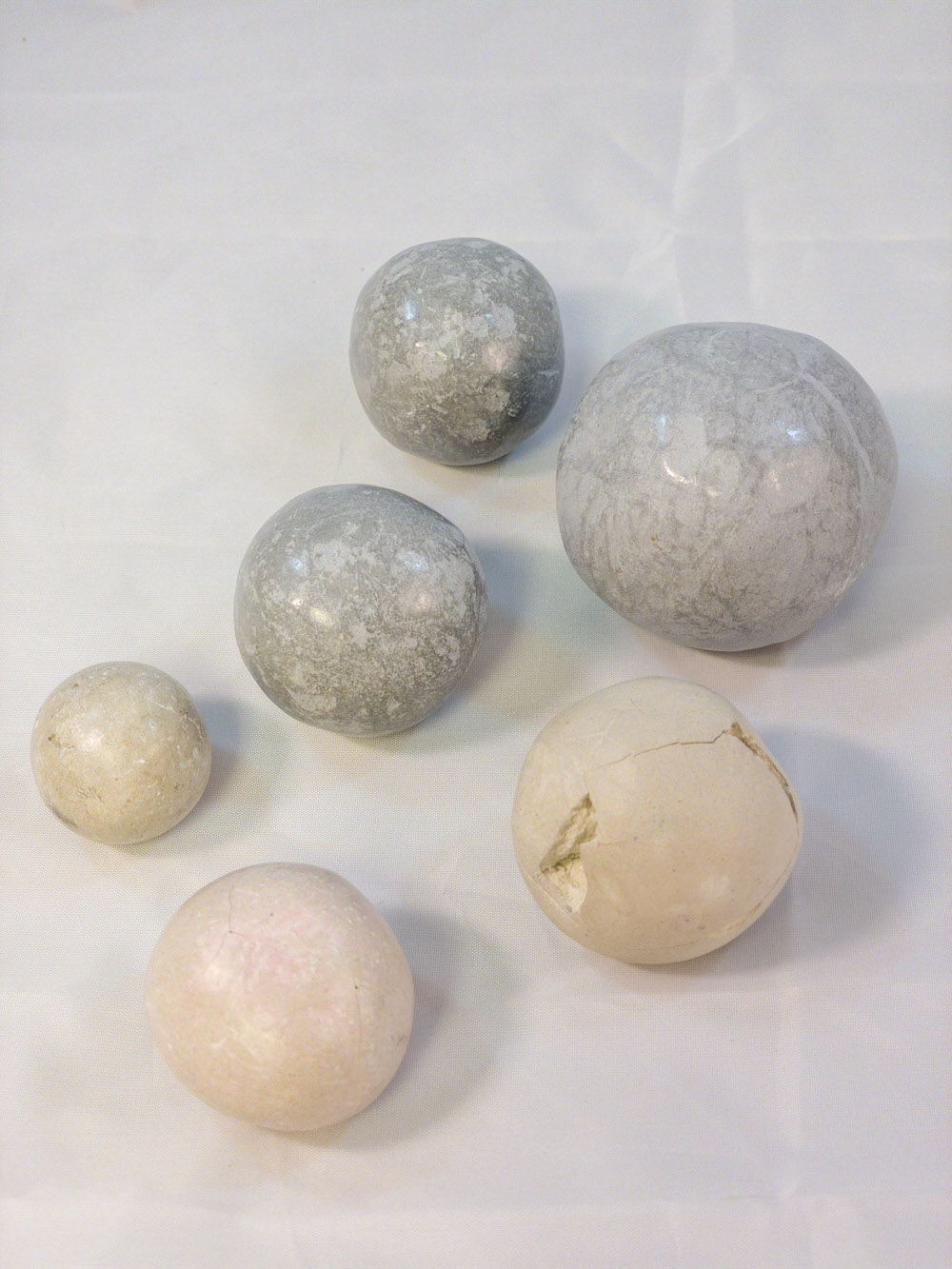Dorodango Polished Mudballs
Object contributed by Christopher Nunn; Exhibit text by Ashley Hennessey

About This Object
The Dorodango collection is a collection of mudballs that were collected by the object’s owner over the course of the past 25 years. He teaches the process of creating dorodango as an educational tool in his art classes to help his students learn how nature can be used to create art, to teach them patience, and as a means of relief and comfort.
This is a collection of mudballs built over 25 years of teaching children that they can manipulate materials in order to make art and bring them comfort. —Christopher Nunn
Play as Educational Development
A History Harvest Perspective
Exhibit text by Ashley Hennessey
If you, like our contributor, see the value of using mudballs to learn about Earth, creativity, meditation and oneself, try your hand! This video on the step-by-step process that takes mud from dirt and water to polished sphere was created by The Nito Project.
But the dorodango isn’t just an art form. It’s also about the role of play in human development. In the 1960s and ’70s, a professor at Indiana University, Annie L. Butler, emphasized the importance of play as development in childhood education, a dedication visible in the collection of correspondence and publications she bequeathed to IU’s University Archives. We can see her discussions of the ways that play shapes young children’s learning environments echoed in our History Harvest contributor’s description of how he uses the creation of dorodango to explore play in higher-education classrooms.
The making of dorodango was revived in the late 1990s by Professor Fumiu Kayo, a Japanese professor studying the intersection of experimentation and play in childhood development.1 Kayo’s research suggests that it is important for children to learn about nature through experiencing nature. The combination of play and experimentation involved in making dorodango helps very young children acquire a respect for nature and learn mental balance, lessons that last well into adulthood.2
The dorodango contribution brings ideas of play from Professor Butler’s mid-century work together with early childhood education in Japan in Bloomington classrooms and shows us just how embedded in a global context we are at IUB.
Notes
-
Sheng, Yi. “A Post-Communist Picnic.” May 15, 2010. ↩
-
Blattner, Géraldine, and Melissa Fiori. “Virtual Social Network Communities: An Investigation of Language Learners’ Development of Sociopragmatic Awareness and Multiliteracy Skills.” CALICO Journal 29, no. 1 (2011): 24-43. ↩